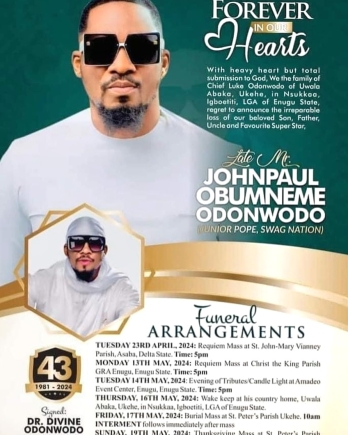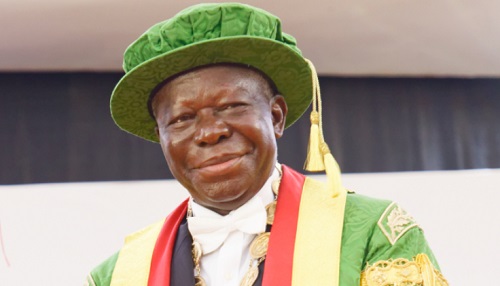In our latest essay in which a critic reflects on culture that brings them joy, Clare Thorp pays tribute to The Ronettes’ lovelorn, cinematic masterpiece. M
My favourite story about The Ronettes’ Be My Baby isn’t that its iconic intro was a fluke, although the fact that drummer Hal Blaine accidentally missed a beat and created one of the most recognisable three seconds in music is a wonderful bit of pop mythology. Nor is it that when Brian Wilson of The Beach Boys first heard the song on his car radio he was so taken aback by its brilliance he had to pull over. Or that on a night out in London John Lennon asked the band’s lead singer Ronnie Spector (then Ronnie Bennett) to sing a little bit of Be My Baby into his ear and then, in her words, “almost passed out”.
More like this:
– The band who brought gay sex to pop
– The perfect crime drama to watch now
– A cartoon with the meaning of life
It’s that, when 19-year-old Ronnie was in the studio to record the song, she quietly took herself away from producer Phil Spector and a room packed with musicians and went to the ladies’ bathroom to practise her vocals. It was there that Be My Baby’s famous ‘whoas-ohs’ and ‘oh-oh-oh-ohs’ were born. “People talk about how great the echo chamber was at Gold Star [studios], but they never heard the sound in that ladies’ room,” she wrote in her 1990 memoir, the fabulously titled Be My Baby: How I Survived Mascara, Miniskirts and Madness. Every time I hear Be My Baby now I think of Ronnie in front of that mirror, teasing her hair a little higher, sweeping on another coat of mascara… and casually honing one of the best pop vocals ever recorded.
The Ronettes had been struggling to break through when a phone call to producer Phil Spector landed them an audition – and the rest is history (Credit: Getty Images)
Clocking in at just over two-and-a-half minutes, Be My Baby might just be the perfect pop song. Half a century after nearly crashing his car because of it, Brian Wilson still thought so. “It’s the greatest record ever produced,” he told The New York Times in 2013. It’s not just a great song, but an incredibly familiar one. You’ll know that famous intro – boom, boom, boom, BAM – even if you think you don’t. Maybe, like me, you first heard it on the opening credits to Dirty Dancing, soundtracking a jerky black and white montage of jiving, writhing bodies. Perhaps you recognise it from the beginning of Martin Scorsese’s Mean Streets, where it plays over grainy home video footage of Harvey Keitel. Or it might be familiar from one of the dozens of records to have lifted those opening drum beats over the years. In its nearly 60-year lifetime, it’s had not just a second coming but several.
Musical and emotional layers
Perhaps its because its soundtracked so many big screen moments, but Be My Baby is one of those songs that makes your own life feel more cinematic. For me it evokes memories of weddings, parties and festivals, of first loves and bad break-ups, of a stranger asking me to dance to it in a bar on New York’s Lower East Side. Hearing that famous intro kick in, followed a few seconds later by those sublime vocals, has always cheered me. But lately, the song’s familiarity and its resilience has felt even more comforting than usual.
It’s a tough record, but it has a soft side to it, like The Ronettes – Ronnie Spector
Like all the best pop music, Be My Baby is simple – but only on the surface. “It’s a tough record, but it has a soft side to it, like The Ronettes,” said Spector in her memoir. It has layers – not just musically, thanks to Phil Spector’s lush orchestral arrangements or vocally, with Ronnie’s yearning vocals underpinned by a honeyed chorus of backing singers – but emotionally too. For every line that captures the excitement of a new crush (‘The night we met I knew I needed you so’), there’s another that hints at how suffocating love can be (‘And if I had the chance I’d, never let you go’).
It’s an urgent song, one that demands that you surrender to its charms. “Be my baby now,” orders Ronnie. Other lyrics sound simultaneously romantic and ominous: “I’ll make you happy baby, just wait and see. Oh since the day I saw you, I have been waiting for you.” It’s a song about desperately wanting someone to love you and all the ways that can make you crazy. “I’ll make you so proud of me,” pleads Ronnie, not knowing then just how dark her own relationship with the song’s producer would later turn.
I knew Be My Baby before I knew the band behind it and later, when I saw The Ronettes – all beehives and black eyeliner – it only made me love the song more. The music was pop, but the band behind it was pure was rock ’n’ roll. As Mick Brown writes in his biography of Phil Spector: “The standard demeanour of girl groups of the day was one of demure innocence… But The Ronettes looked as if it was a Saturday night and they were cruising for trouble.”
In 2007, they were inducted into the Rock & Roll Hall of Fame; at the ceremony, Keith Richards introduced them (Credit: Getty Images)
Sisters Veronica and Estelle Bennet and their cousin Nedra Talley, all hailed from Spanish Harlem, New York. They had been playing shows in their home city, but were struggling to break through, when a phone call to Phil Spector landed them an audition in early 1963. The producer was smitten, with the girls’ voices and, especially, with lead singer Ronnie. Be My Baby was the band’s first single on Spector’s label, written by him, along with songwriting duo Ellie Greenwich and Jeff Barry, and inspired by those heady first flushes of romance between Ronnie and Phil. “He was infatuated with my voice, my body, everything. It was mutual,” said Ronnie in a 2015 interview.
The creation of a masterpiece
Ronnie flew out to Los Angeles – minus her two bandmates – to record the song at Gold Star Studios, the birthplace of Phil Spector’s famous Wall of Sound. Spector, a notorious taskmaster, insisted on 42 run throughs by the band before he finally hit record. Darlene Love was among the backing singers, as was Sonny Bono and his new girlfriend, a then unknown teenager called Cher. As for that iconic intro, drummer Hal Blaine – who died last year, aged 90 – claims it was an accident. “I may have missed the second beat,” he told NPR in 2001.
Ronnie’s vocals were the final brick in Spector’s Wall of Sound and he made her rehearse them for three days straight. Like most girl groups of the time, The Ronettes didn’t get a lot of say in what they recorded – but by taking herself off to the bathroom and coming up with those inimitable vocal sounds, Ronnie found a way to carve out her own space on the record.
The single was released a month later in August 1963, three months before the assassination of JFK, with Dick Clark introducing it on American Bandstand as: “the next record of the century”. It reached number two in the US and number four in the UK. More singles followed: Baby I Love You, Walking In The Rain, I Can Hear Music, though none matched the success of Be My Baby. The Ronettes toured the UK, where an up-and-coming band called The Rolling Stones supported them, and became friends with The Beatles, Estelle briefly dating George.
But as their fame grew, so did Phil Spector’s jealousy. When The Beatles asked The Ronettes to support them on their US tour in 1966, Spector refused to let Ronnie go, sending one of her cousins as a replacement. By the time Phil and Ronnie married in 1968, the band had broken up and Ronnie’s singing career appeared to be over.
One of The Ronettes’ most famous fans was Amy Winehouse – who channeled the spirit of Ronnie Spector in both her look and her raw, raspy vocals. (Credit: PA)
For the next six years, she was a virtual prisoner in their Beverly Hills mansion. In her memoir, Ronnie describes how her husband put an inflatable version of himself in the passenger seat of her car so that it would always look like he was with her. Encouraged by her mother, she eventually made a run for it, barefoot, and the couple divorced in 1974 – though thanks to years of lawsuits over unpaid royalties, it would be a long time before she could completely separate herself from him.
Decades later, he was still trying to sabotage her career, even writing to the Rock & Roll Hall of Fame to try and deter them from inducting The Ronettes. “I do not think they made the contribution required of some to be in the Hall of Fame, nor do they have the body of work that would qualify them for induction,” Spector argued. Introducing the band at a ceremony in 2007, Keith Richards politely disagreed. “They could sing their way right through a wall of sound,” he said. The band appeared together for the first time in decades to collect their honour – but it was the last ever public appearance of Estelle, who died just two years later. In 2008 Phil Spector was found guilty of the murder of actress Lana Clarkson, whose body was found in his LA home. He was jailed for 19 years.
A story of survival
Like many in recent years, I’ve had to grapple with the fact that a piece of culture I love was created by someone monstrous. But, this is as much Ronnie Spector’s song as it is her ex-husband’s. The lyrics wouldn’t exist without her there to inspire them. Take away her vocals and the song would be nowhere near as luminous.
I first saw her live in 2014 at London’s Queen Elizabeth Hall, when she was touring her one-woman show, Beyond The Beehive. It was part gig, part survival story, the singer regaling the audience with stories from her life. She told us she couldn’t perform her biggest hits because, even from behind bars, Phil Spector wouldn’t give permission for her to use them in the context of a theatrical performance. But after she bid us goodnight, there was an announcement that Ronnie would be back on stage to perform a short “concert” (that technical difference meant her ex-husband had no say over what she sang) which, of course, included Be My Baby. Not for the first time, Ronnie had found her own way to do things.
Be My Baby is the Ground Zero for the modern pop era – Rick Nowels
She is a survivor, and so is this song –influencing musicians for six decades now. Within a year of its release, Brian Wilson wrote The Beach Boys’ Don’t Worry Baby as his own tribute to the song. Since then, everyone from Hall & Oates and The Jesus and Mary Chain to Bat For Lashes and The Magnetic Fields have found the sound of Be My Baby irresistible. Lana Del Rey producer Rick Nowels has said Be My Baby is “Ground Zero for the modern pop era”, and its influence is clear on the singer’s 2017 collaboration with The Weeknd, Lust For Life. 
Ronnie Spector has continued to flourish as a musician through the decades, despite her ex-husband Phil Spector’s attempts to sabotage her career (Credit: Alamy)
One of The Ronettes’ most famous fans was Amy Winehouse – who channeled the spirit of Ronnie Spector in both her look and her raw, raspy vocals. Spector now sings Winehouse’s Back to Black at her own shows in tribute to the late singer. “Amy Winehouse was so great for me because she made me feel like what I did mattered,” she told Rolling Stone in 2016. It’s sad it took her so long to realise that.
Noel Gallagher – who had Be My Baby for the first dance at his wedding – chose the song not just as one of his Desert Island Discs, but the one record he would save from the pile of eight. ”It would put a smile on my face,” he said. Finding myself not on a desert island, but in a period of isolation, it’s been doing that for me. When life feels so stagnant, listening to Be My Baby is a reminder that things can, and will, feel thrilling again. When weddings eventually return, when we swarm back onto dance floors, when being in a room full of strangers is full of excitement and possibility instead of danger and anxiety, Be My Baby will still be there, sounding as glorious as it always has.
source: Clare Thorp
BBC








